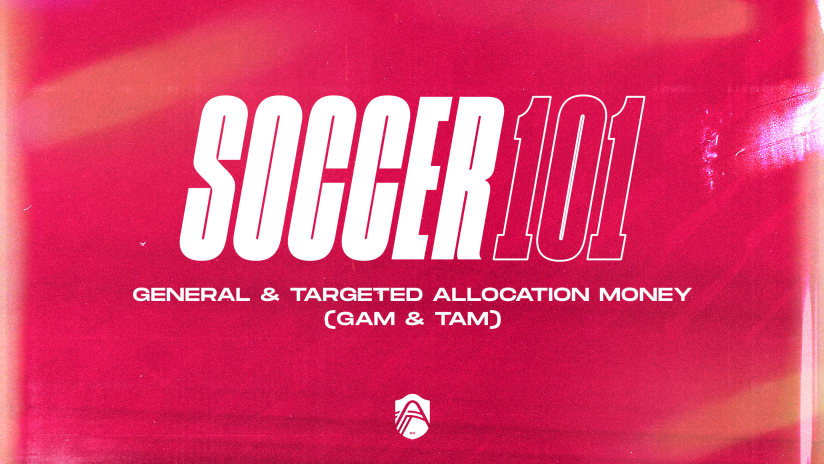Written by Zach Lowy | Co-founder & Lead Writer at BreakingTheLines.com
The South American Football Confederation, also known as CONMEBOL, became the first continental confederation in world soccer on July 9, 1916, ushering a new chapter into the beautiful game and commemorating the 100-year anniversary of Argentina’s independence from Spain with the Campeonato Sudamericano de Fútbol, now known as the Copa América – a summer tournament contested between every international team of South America. It wouldn’t be until UEFA and the Asian Football Confederation came along in 1954 that soccer finally witnessed a domino effect with the Oceania Football Confederation and Concacaf being established in the coming decade.
The Confederation of North, Central America, and Caribbean Association Football was founded in Mexico City on September 18, 1961, but currently bases its headquarters in Miami, Florida, a competition that boasts 41 member associations including the United States, Canada, and Mexico — all of whom will be hosting the 2026 FIFA World Cup. Shortly after its foundation, the Concacaf Champions League, originally known as the Concacaf Champions' Cup, took place in 1962. The annual club competition pits the finest teams in North and Central America against each other in a knockout tournament, with the winner qualifying for a spot in the FIFA Club World Cup.
Liga MX’s Club América is the most successful team in the competition’s history with seven titles, and only two Major League Soccer teams (D.C. United in 1998, Los Angeles Galaxy in 2000) have won the competition that has been recently dominated by Mexican clubs.
The Concacaf Championship followed in 1963 as an international tournament that would be held every four years, but it was replaced in 1991 by the Concacaf Gold Cup, which is held every two years. Whilst the United States has either hosted or co-hosted every single edition of this tournament, Mexico reigns supreme in this competition with 11 championships. This year’s edition saw the United States defeat El Tri in the final in Las Vegas courtesy of an extra-time goal from Atlanta United’s Miles Robinson to seal its 7th Gold Cup.
This was the United States’ second triumph over Mexico in two months after the Stars and Stripes edged their southern rivals in the inaugural CONCACAF Nations League Final. Both teams narrowly advanced to the championship in Denver, Colorado, with the U.S. beating Honduras on a late goal from forward Jordan Pefok and Mexico prevailing in a penalty shootout against Costa Rica. Manager Tata Martino’s team took the lead in the first two minutes via Mexico forward Tecatito Corona, but U.S. midfielder Giovanni Reyna’s equalizer leveled the score going into halftime. After Weston McKennie quickly canceled out Diego Lainez’s late goal, the stage was set for U.S. midfielder Christian Pulisic to convert from the spot in extra time to lead his country to a thrilling victory.
There are other Concacaf tournaments such as the U-20 Championship, the Women's U-17 Championship, and the Beach Soccer Championship, to name a few. It is undeniable, however, that the most consequential Concacaf fixtures come in the North, Central American, and Caribbean sections of the FIFA World Cup qualification.
After two preliminary rounds that pit Concacaf teams ranked six to 35, based on the FIFA rankings, the “Octagonal” format takes place. Each of the eight qualified nations play 14 matches, seven home and seven away, with the three top-ranked teams qualifying automatically for the FIFA World Cup. The fourth-placed team, on the other hand, must play a two-legged match against another national team to book its spot in the World Cup. Mexico, United States, Costa Rica, Jamaica, and Honduras recently received byes directly to the octagonal round as they were the top five Concacaf teams in FIFA’s rankings.
Concacaf teams’ recent history in the inter-confederation playoffs has been sporadic. After Trinidad and Tobago edged Bahrain to book a historic berth in the 2006 FIFA World Cup, Costa Rica lost to eventual semifinalists Uruguay. Mexico steamrolled New Zealand in the following edition to seal its spot in Brazil, but Honduras fell to Australia as a hat-trick from captain Mile Jedinak gave the Socceroos the victory. Honduras finished even in points with Panama, which advanced to its first-ever FIFA World Cup along with Mexico and Costa Rica. The United States, on the other hand, missed out on its first World Cup since 1986 after losing to Trinidad and Tobago in the final qualifier in Couva.
Mexico currently sits atop the qualifying group for the 2022 FIFA World Cup with 14 points from its first six matches, with the United States (11) and Canada (10) trailing in pursuit and Panama (6) occupying the fourth-place spot. Costa Rica (6), Jamaica (5), El Salvador (5), and Honduras (3) have struggled in the first half of qualifiers, but there are eight more qualifiers left to be played and plenty of time to make up the margins. The United States hosts Mexico in Cincinnati, Ohio in its next World Cup qualifier on November 12, 2021, followed by a trip to Kingston to face off against host Jamaica.







